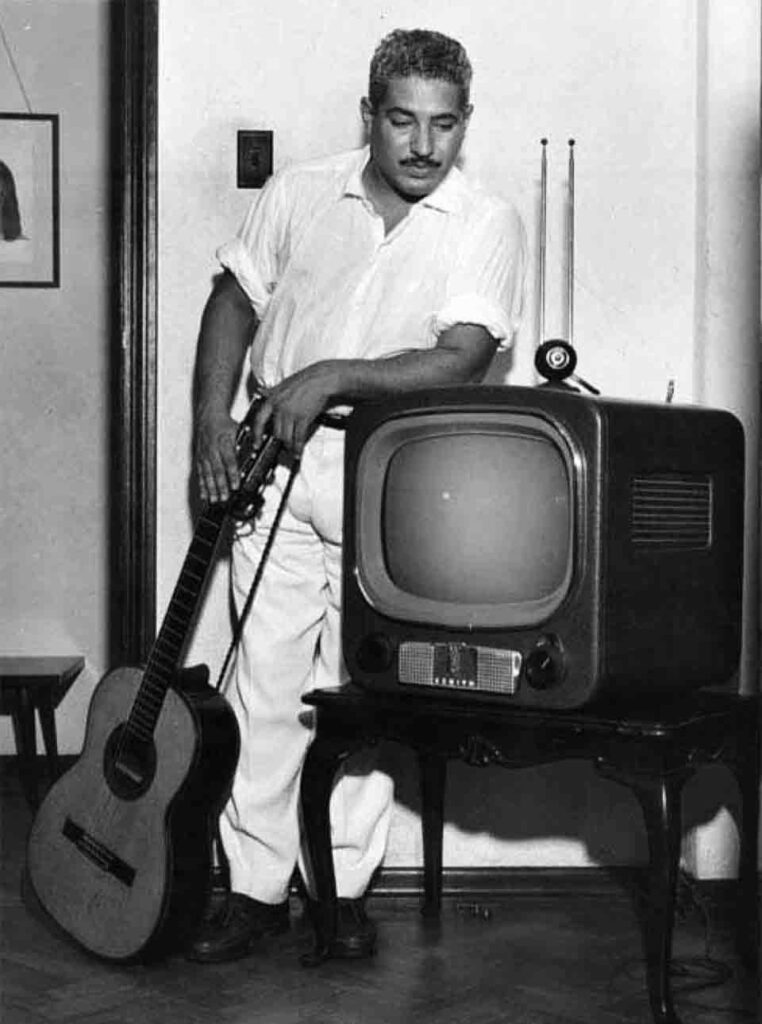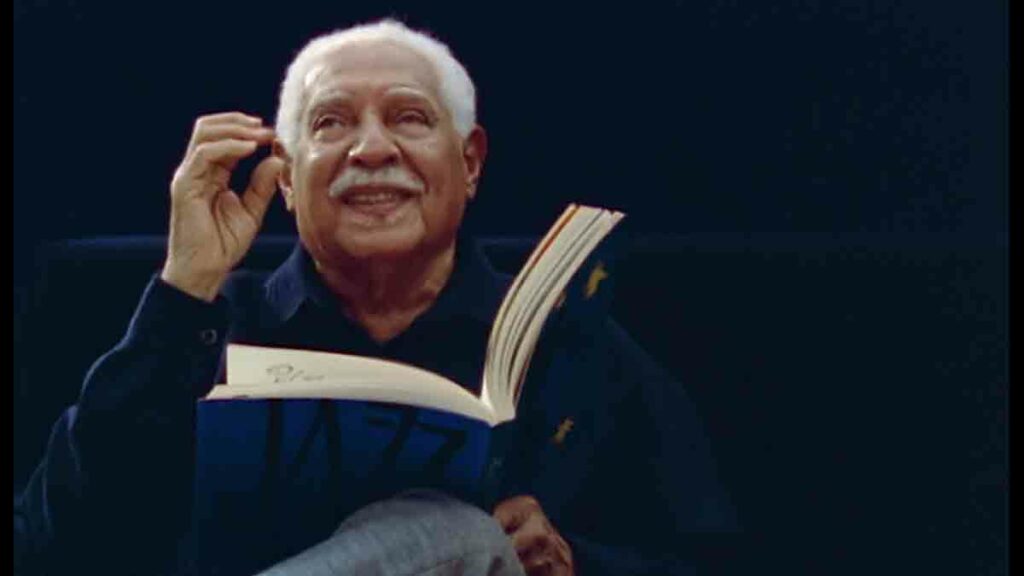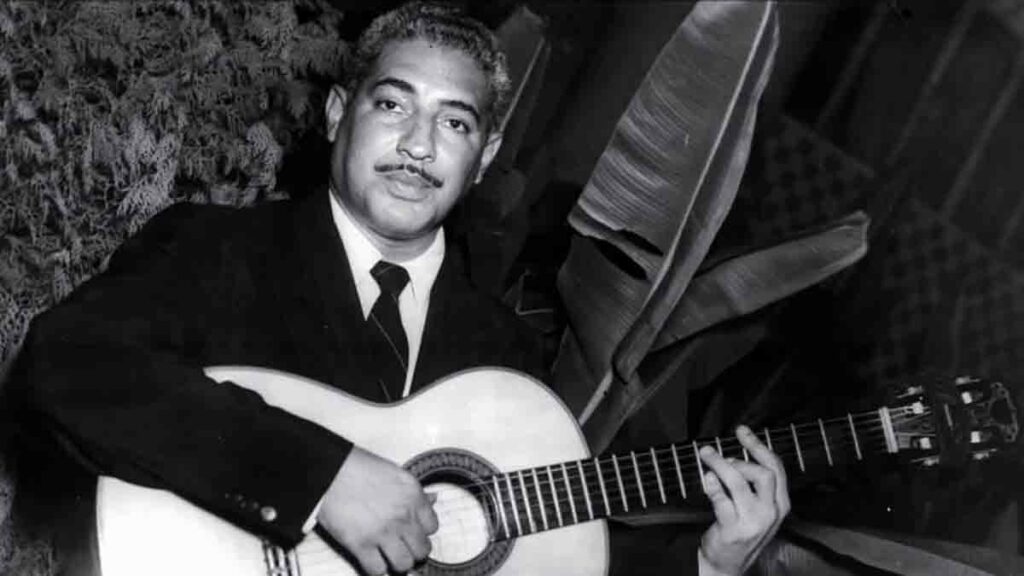Dorival Caymmi is a key player in the Brazilian music and film industry. Over a long creative career, he realized himself as a bard, composer, performer and lyricist, actor. In his treasury of achievements, there is an impressive number of author's works that sound in films.
On the territory of the CIS countries, Caimmi became famous as the author of the main musical theme of the film "Generals of the Sand Quarries", as well as the musical work Retirantes (the composition sounds in the cult series "Slave Izaura").
Childhood and youth Dorival Caymmi
The artist's date of birth is April 30, 1914. He was lucky to meet his childhood in the colorful Brazilian town of Salvador. He was brought up in an intelligent and fairly wealthy family.
The head of the family held a prestigious civil servant position. Mother dedicated herself to raising three children. The woman never aspired to fulfill her potential. She supported her husband, and was also involved in the development of offspring.
In the house of a large family, music often sounded. The father, who dealt with serious issues, did not deny himself the pleasure of playing music. At home, he played several musical instruments. And my mother performed folklore works, instilling in children a love for Brazilian culture.
Dorival attended a comprehensive school. In the same period of time, the parents assigned the young man to the church choir. The priest and parishioners were fascinated by the guy's voice data. Parents were subtly hinted that a good musical future awaited their son.

Dorival Caymmi's first work
Caimmi did not immediately reveal his creative potential. He even quit singing. During this period of time, he was lured by journalism. The guy worked part-time for the local newspaper of the state. After the change of direction, Dorival was forced to change jobs. During this period of time, he moonlights as an ordinary street vendor.
Around the same time, he again began to get involved in music. Caimmi picked up the guitar. The young man independently mastered playing a musical instrument. In addition, he did not deny himself the pleasure of singing.
At the end of the 20s of the last century, he began to compose author's compositions. At the same time, as part of the traditional Brazilian carnival, his work was celebrated at the highest level. However, it cannot be said that the victory at the carnival added to his popularity. It will take several decades for Caimmi's talent to be recognized.
For a long time he did not recognize himself as a talented singer, musician, composer. Moreover, Caimmi was not going to connect his life with a creative profession. Dorival naively believed that he realized himself in something else.
In the 30s, he packs his bags and, at the insistence of the head of the family, goes to Rio de Janeiro. The young man was aimed at obtaining a legal education. As a student, Caimmi works part-time at Diários Associados.
Even before moving to Rio de Janeiro, several of the artist's tracks were in rotation on local radio. One of the compositions was liked by the honored singer Carmen Miranda. At the end of the 30s, Dorival's track "What does a girl from Bahia have?" sounded in the movie "Banana".
Signing with Odeon Records
In his student years, Caimmi continued to play music for fun, but, as before, he did not take creativity seriously. But in vain. The heads of the recording studio Odeon Records approached a talented guy to offer to sign a contract. Dorival gave a positive answer.
He worked hard in the recording studio to eventually present not one but three singles. We are talking about the tracks: Rainha do Mar/Promessa de Pescador, Roda Pião and O Que É Que a Baiana Tem?/A Preta do Acarajé.
It is from this period of time that the creative career of the talented Dorival starts. Some time later, within the framework of the "columns" of the Rádio Nacional network, (at that time it was one of the most listened to radio waves in Brazil), the songs Sambada Minha Terra and A Jangada Voltou Só sounded.
The popularity of the artist has grown significantly. He began to receive offers of cooperation with directors. So, during this period of time, he began to compose the composition for the tape Abacaxi Azul. Moreover, he personally performed it in the film.

The Peak of Dorival Caymmi's Popularity
When the work Acontece Que Eu Sou Baiano "flew" into the ears of the fans, the artist in the literal sense of the word woke up popular. Then came the realization that music is a sphere in which he not only can, but must develop.
In the same period of time, he discovered another talent in himself - he painted pictures coolly. Subsequently, the musician created a series of plot canvases and paintings. He chose a rather complex and controversial topic - religion.
Around the same time, the artist became part of the creators of compositions in the samba-canção style. There he met the virtuoso and talented musician Ari Barroso.
He worked closely with his countryman Jorge Amado. In the mid-40s of the last century, Dorival joined in the creation of an anthem for the election campaign of the communist Luis Carlos Prestes. At the same time, the premiere of the musical work Modinha para a Gabriela and Beijos pela Noite, Modinha para Teresa Batista, Retirantes took place.
One of the most recognizable compositions of Dorival Kaimmi's repertoire, the song "March of the Fishermen", deserves special attention. The work was performed in the American film "Sand Pit Generals". By the way, not only the presented piece of music, but also the musician himself flashed in this motion picture. To date, the "March of the Fishermen" remains an actual composition. The track is covered with pleasure by famous artists.
His discography is not devoid of full-length studio LPs. He released over 15 unrealistically cool records. The premiere of the last album took place in the "zero". The collection was called Caymmi: Amor e Mar. Note that the record was mixed on the EMI label.
Dorival Caymmi: details of the artist's personal life
Dorival, at the start of his creative career, practically did not talk about relationships with representatives of the opposite sex. Then, to raise love topics was something of a mauvais ton.
But, soon the journalists did manage to find out that he legalized relations with a charming singer named Adelaide Tostes (the performer is known to her fans under the creative pseudonym Stella Maris).
In this marriage, three children were born. They lived together for almost 70 years. Journalists said that Tostes had an iron character. Rumor has it that she repeatedly took her husband from bars, where he spent time in the company of young girls.

Death of Dorival Caymmi
The last months of his life turned out to be a real torture for the artist. As it turned out, he was given a disappointing diagnosis - kidney cancer. He did not take the diagnosis seriously and was sure that the disease would recede. But, the miracle did not happen.
August 16, 2008 he died. He is buried in the cemetery of Saint John the Baptist in Rio de Janeiro.



